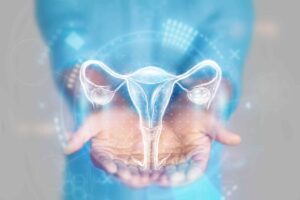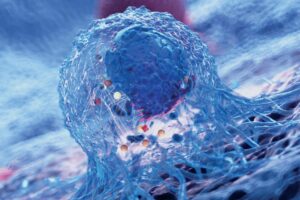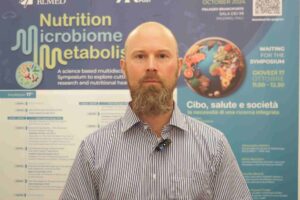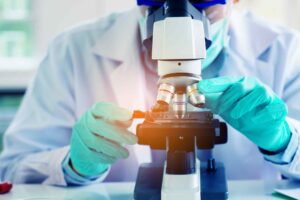What is already known
Recent research suggests that gut bacteria interact with host-produced steroids — hormones that regulate key processes such as metabolism, sexual development and reproduction. However, the mechanisms and impacts of these interactions are not yet fully understood.
What this research adds
Researchers have found that the human gut bacteria Gordonibacter pamelaeae and Eggerthella lenta convert specific steroid precursors into progestins — a class of sex hormones that play a critical role in the female reproductive system. The team identified a bacterial gene cluster responsible for this conversion and found that the reaction is facilitated by the production of hydrogen gas by gut bacteria. The work also revealed that certain bacterial progestins, including allopregnanolone — an FDA-approved drug for postpartum depression — are increased in the feces of pregnant women.
Conclusions
The findings suggest that gut bacteria transform steroids into hormones that may impact a woman’s health, especially during pregnancy.
Gut microbes are known to regulate several physiological processes. Now, new research suggests that gut bacteria transform steroids into hormones that may impact a woman’s health, especially during pregnancy.
The findings, published in Cell, support the hypothesis that the human gut microbiota acts as an additional endocrine organ by producing metabolites that influence hormonal balance.
Previous studies have shown that gut bacteria interact with host-produced steroids, a class of hormones that regulate key processes such as metabolism, sexual development and reproduction. Scientists have known that bacteria modify steroids in the gastrointestinal tract, likely altering their activity on host receptors. However, the exact chemical modifications of steroids by gut bacteria and their impact on host health are not yet fully understood.
To investigate how gut microbes modify steroids, Megan McCurry at Harvard Medical School in Boston, Massachusetts, and her colleagues developed methods to quantify steroids in small sample volumes.
Transforming hormones
The researchers found that microbial communities from both mice and humans convert specific steroid precursors into progestins, a class of synthetic hormones that mimic the action of the natural hormone progesterone. Progesterone plays a critical role in the female reproductive system by regulating the menstrual cycle and supporting the early stages of pregnancy.
The levels of certain bacterial progestins, including allopregnanolone — an FDA-approved drug for postpartum depression — were higher in the feces of pregnant women than in non-pregnant women, the team also found.
Further experiments revealed a bacterial gene cluster responsible for converting steroid precursors in sex hormones. The experiments also revealed an unexpected role for hydrogen gas production by gut microbes in facilitating this conversion.
Women’s health
The human gut bacteria Gordonibacter pamelaeae and Eggerthella lenta were more abundant in pregnant women and appeared to be the main responsible for the conversion of steroid precursors into progestins.
Transferring the gut microbiota from a pregnant woman into germ-free mice resulted in the production of allopregnanolone and other bacterial progestins, indicating that the microbiota from a pregnant woman can generate these hormones in the gastrointestinal tract.
The work raises the possibility that bacterial progestins originating in the gastrointestinal tract may impact a woman’s health, especially during pregnancy, the authors say. “Longitudinal fecal analyses of steroids and microbiome changes pre- and post-partum, as well as animal behavioral experiments, would help identify correlative and causal relationships, respectively, between bacterial progestins and host behavior and neurological functions.”











